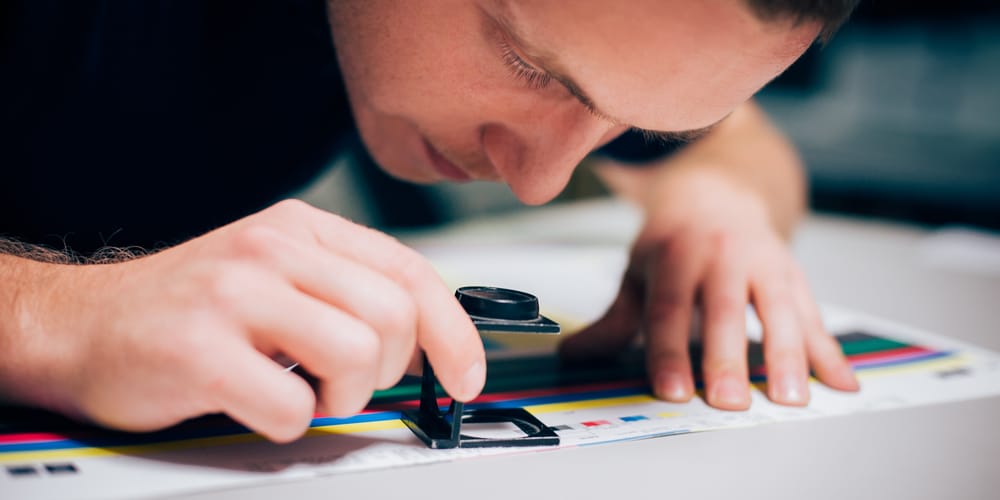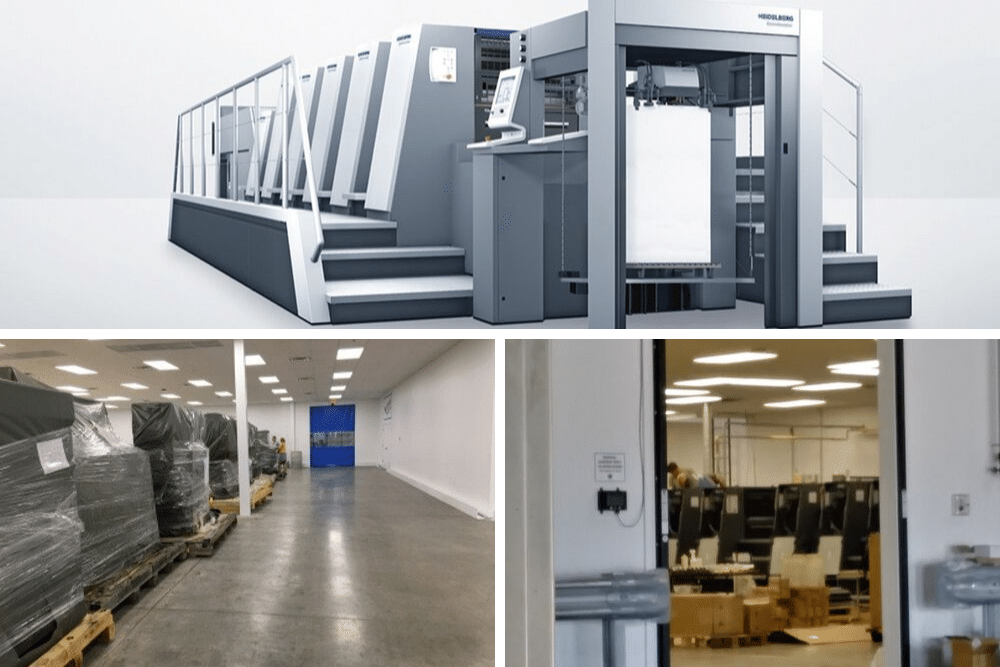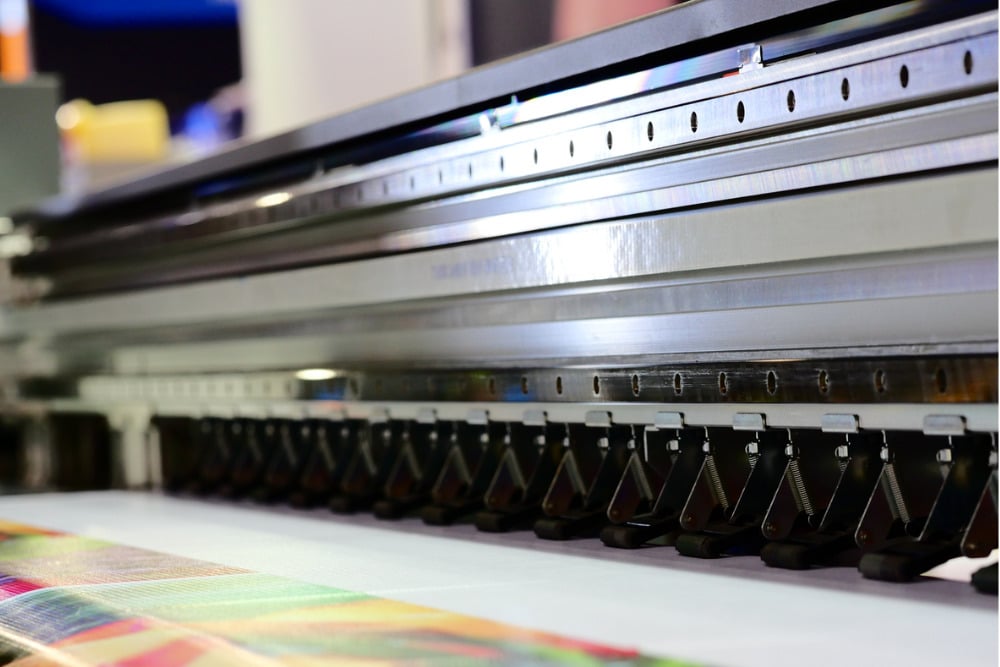Here at Action Mailing and Printing Solutions, we always strive to provide you with the…

Digital Printing Is Changing the Printing Industry
Sharing documents through cloud networks and mobile apps might be the latest technology trend, but there really is nothing like sending out a beautiful marketing piece that your customers can hold in their hand. However, when you are looking for a high-quality commercial printing company, making the right decision for your business can be a little tricky – enter digital printing.
Delivering High-quality, Low-cost Marketing Materials with Digital Printing
Many people still aren’t quite sure what digital printing is and what it means for their business. With advancements in technologies and increasingly innovative applications, this printing method has established its place in the tech world among traditional printing methods – and at times taking their place. In order to truly understand how it has revolutionized the industry, we are going to break it all down for you so that you have a better understanding about the benefits that digital print offers, as well as what it means for the future of outbound marketing.
What is Digital Printing?
To put it simply, digital printing is a production method that puts digital mages directly onto different materials like paper, fabric, window clings, and other synthetic materials.This type of commercial printing service typically uses large-format and high-volume laser or inkjet printers to print out different types of digital files.
At first glance, this method seems like it should take a backseat to traditional printing methods like letterpress and lithography. Consider, however, the cost of making printing plates for traditional methods, which are not yet part of the printing cost per page.
In addition to the cost, you have to think about the labor that goes into the production of traditional printing and its subsequent turnaround times. All the evidence points to the conclusion that digital can definitely hold its own against traditional printing, not to mention that digital printing makes way for on-demand printing and quick image modification.
It essentially means that your message can be created on a computer and then printed directly onto the material of your choice. An alternative to traditional methods such as lithography, flexography, gravure, letterpress, and many others, digital printing eliminates many of the mechanical steps required for traditional printing such as making films and color proofs, manually stripping the pieces together, and making plates or mixing photo chemicals.
Now, some people say that this new method produces a lower quality product than traditional methods, but the difference is often negligible and microscopic. In fact, digital printing shines the most when lower quantities of printed materials are needed.
How Do You Utilize Digital Print Media?
Digital printing machines provide a quick way to print fliers, banners, and brochures that promote your business. They also provide an easy way to print out more interesting marketing materials like vinyl stickers, canvas bags, and more. Whether you want your brand to be more visible at trade shows, fundraising events, or conventions, you have a wide range of materials to print your logo on with the help of a professional digital printing service provider.
The different types of digital print media, the following are the most common:
- Paper
This one is a big of a given. Digital printers can accommodate different types of paper, from glossy and thick to thin and translucent, to turn your digital design into a physical piece of marketing material.
- Fabric
Digital printers work well with silk fabric, polyester, and viscose. This technology is also used to print designs on organic canvas, cotton, linen, and wool.
- Vinyl
The versatility of services really shine on different vinyl materials including: wrap vinyl, inkjet vinyl, floor graphic vinyl, and banner vinyl.
- Window Film ad Wall Graphic Media
Print any digital design you want on adhesive-backed, dry-install, or cling window films. Digital printers can also print adhesive and non-adhesive wall graphics.
- Backlit Media
Create compelling visual effects through paper-based, polyester film, or vinyl backlit media displays.
Your digital printing team helps you choose the right type of media for optimal print results. Just send your design; the team can take care of heat settings, ink saturation, and linearization to maximize ink usage and minimize production time and costs.
How Does Digital Printing Work?
Traditional offset printing uses printing plates and wet ink to imprint designs on different materials like paper, fabric, and vinyl. Alternatively, digital printing directly prints files and designs onto objects. In other words, you can simply send PDFs and images directly to the digital printer and the machine will automatically adjust the ink, toner, and exposure to accurately imprint your design onto the chosen material.
Digital printers may either be inkjet or toner-based printers. The former produces your image using droplets of ink while the latter uses fine, plastic-based powder for bright prints that come out dry.
Either way, the advantages of digital printing are definitely not something to look over:
- Save Time and Effort
Traditional printing methods require printing plates before actually transferring the design onto surfaces. With digital methods, you can simply upload a high-resolution image and the printer will take care of the rest. This minimizes the effort on your part while, at the same time, decreases the turnaround time of your order.
- Customize Designs
Product personalization is an increasingly popular aspect of advertising strategies. You can even tweak existing designs and print them out immediately with the help of a digital printer. Whether you are fixing a minor detail or changing the colors completely, your design will come out exactly as you imagined.
- Avoid Image Distortion
The process is sharp and precise, resulting in the production of high-quality prints and less chances of image distortion.
Digital technology gifted the commercial printing industry with a quicker, more efficient process. From quicker turnaround times to sharper designs, the features of digital printing truly are the game changer of the industry.
Why is Digital Printing Revolutionary?
So, why is digital printing a new standard for the industry? The technology is quickly evolving and digital printing output quality is improving continuously. People expect printed materials to be quick, accurate, and up to date which means you need to choose a provider that is able to produce exactly that.
Aside from its differences from traditional, analog printing methods and being able to print directly onto almost any given media substrate, digital printing also enables users to take advantage of personalized, variable data printing (VDP), as well as being able to print-on-demand and produce cost-effective short runs with fast turnarounds.
This type of printing also provides more choices, features, and flexibility than other methods such as offset or flexographic printing. These advancements in technology are delivering a print quality that not only mimics traditional printing methods, but does it faster and better.
How is it Changing the Industry?

With advancements in technology such as quality and speed, things that used to be disadvantages to digital printing technology are quickly disappearing and machines are closing the gap on more traditional outputs.
Digital printing technology succeeds in producing on demand and short print products quickly and cost-effectively. Digital printing is also an ideal platform for personalization which means if you want to be able to easily modify images and messages using variable data printing, then digital printing is the way to go.
Digital printing machines can also print on everything from thick cardstock, heavyweight papers, and folding cartons to fabric, plastics, and synthetic substrates. T-shirt printing is a very popular trend among applications and some even have the capability to print on other fabrics including linen and polyester.
While inkjet and laser printers may be the most familiar and most prevalent among most people, there are many other types of digital printing machines, including sheet-fed production printers, cut-sheet digital presses, production inkjet printers, and continuous feed printers, as well as a few other methods.
Dye sublimation is favored by graphic designers for high-end proofing and even by some businesses that want to be able to produce marketing materials quickly while also using the best possible color standards. Thermal wax works well for businesses that need to produce large quantities of transparencies for colorful business presentations when overhead projectors are needed.
The Advantages
When it comes to digital printing, everything starts with its cost-effectiveness. Because printing plates are not required in digital printers, it has completely eliminated the expense of plate-making which means there is less investment involved to set up a single job and setup costs are lower for short runs so you are able to print the amount you need, when you need it.
Digital printing also offers impressive quality and consistency over other, more traditional options. With digital printing, the quality of the last piece of a batch is the same as that of the first. Colors show up perfectly on the prints and you won’t notice any issues with harsh lines or color bleeding.
There are also fewer steps in the digital printing process, and as a result, the final product can be delivered quicker. This makes it easier and less expensive to make any amount of last-minute changes to a print job or print multiple variations and still be less expensive and less time-consuming when it comes to producing short runs or doing smaller print-on-demand jobs.
Lastly, because of its improved technology, digital printing provides the most affordable solution for customization, especially when it comes to business cards, and direct mail pieces and letters and its variable data capabilities, names, addresses, codes, or numbering can be easily changed.
If you are looking for a printing company in Kansas City that has the ability to use digital printing to help build your business, contact our team at Action Mailing and Printing Solutions.



It’s great that you talked about digital printing and how it comes with cost-effective advantages for a business. The other day, my aunt said she wants to start a business, so she’s looking for advertising ideas. I think my aunt will benefit from printing her advertising media, so I’ll suggest it when I see her later today. Thank you for the information on digital printing and how it’s changing the printing world.
Thanks for pointing out that commercial printing can also be a good way for printing plates. I’d like to know more about such services because I plan to start working on a new business that I will be launching soon. Commercial printing services will be require for its marketing.
Digital printing is a modern printing method that involves the direct transfer of digital images onto various media, including paper, fabric, and other substrates. Unlike traditional printing techniques, such as offset printing, which requires printing plates, digital printing uses electronic files (such as PDFs) to produce prints. Here are some key aspects of digital printing:
Your site visitors, especially me appreciate the time and effort you have spent to put this information together. Here is my website YV6 for something more enlightening posts about Thai-Massage.
Truly appreciate your well-written posts. I have certainly picked up valuable insights from your page. Here is mine 81N about Thai-Massage. Feel free to visit soon.